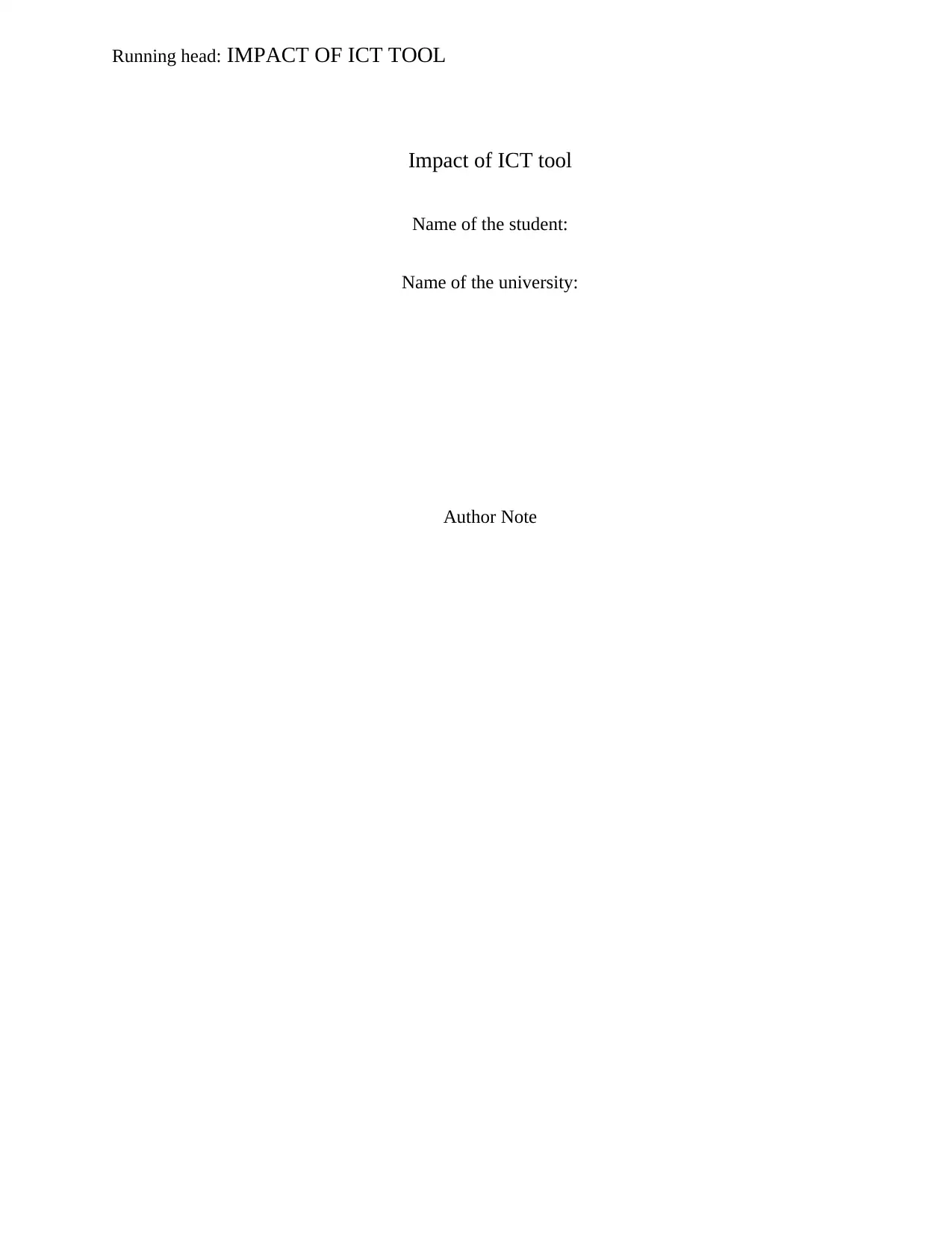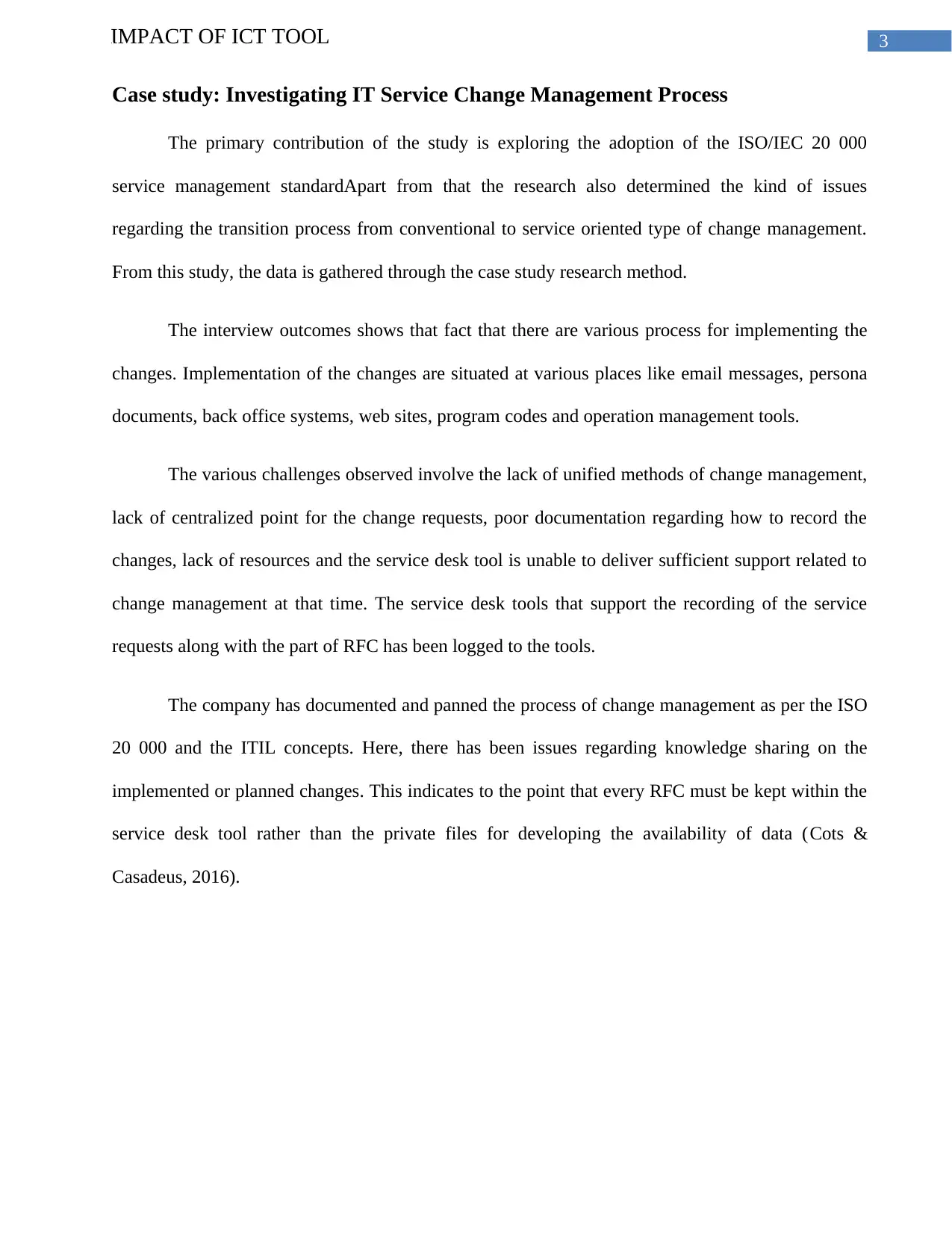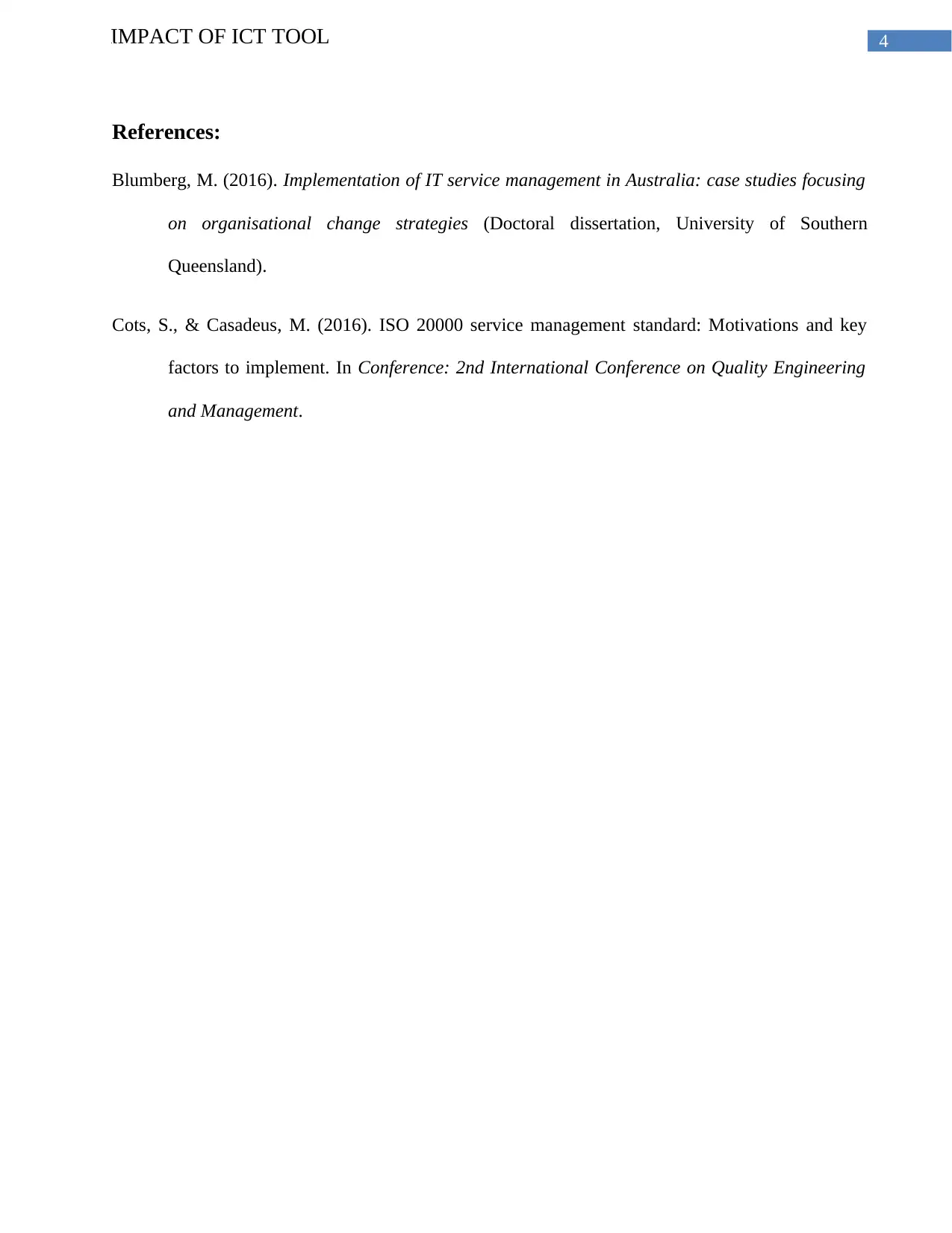ISEM 570 Homework 3: Analysis of ICT Tool Impact on Service Transition
VerifiedAdded on 2022/08/20
|5
|694
|18
Homework Assignment
AI Summary
This homework assignment analyzes the impact of ICT tools on Service Transition, focusing on Change Management processes within the ITIL framework. It presents two case studies: the deployment of IT Service Management in Australia and an investigation of the IT Service Change Management Process. The assignment details the implementation of change management strategies, including Socio-Technical Systems (STS) approaches and the adoption of ISO/IEC 20000 standards. It discusses challenges such as unsuccessful ITIL deployments, lack of unified change management methods, and issues with knowledge sharing. Furthermore, the assignment explores the classification of Request for Change (RFC) types, including routine, standard, and normal, and the standards used such as British Standard 15000. The analysis highlights the importance of organizational change strategies and the impact of ICT tools on achieving successful service transitions, providing valuable insights for IT practitioners. References are provided in APA format.
1 out of 5












![[object Object]](/_next/static/media/star-bottom.7253800d.svg)